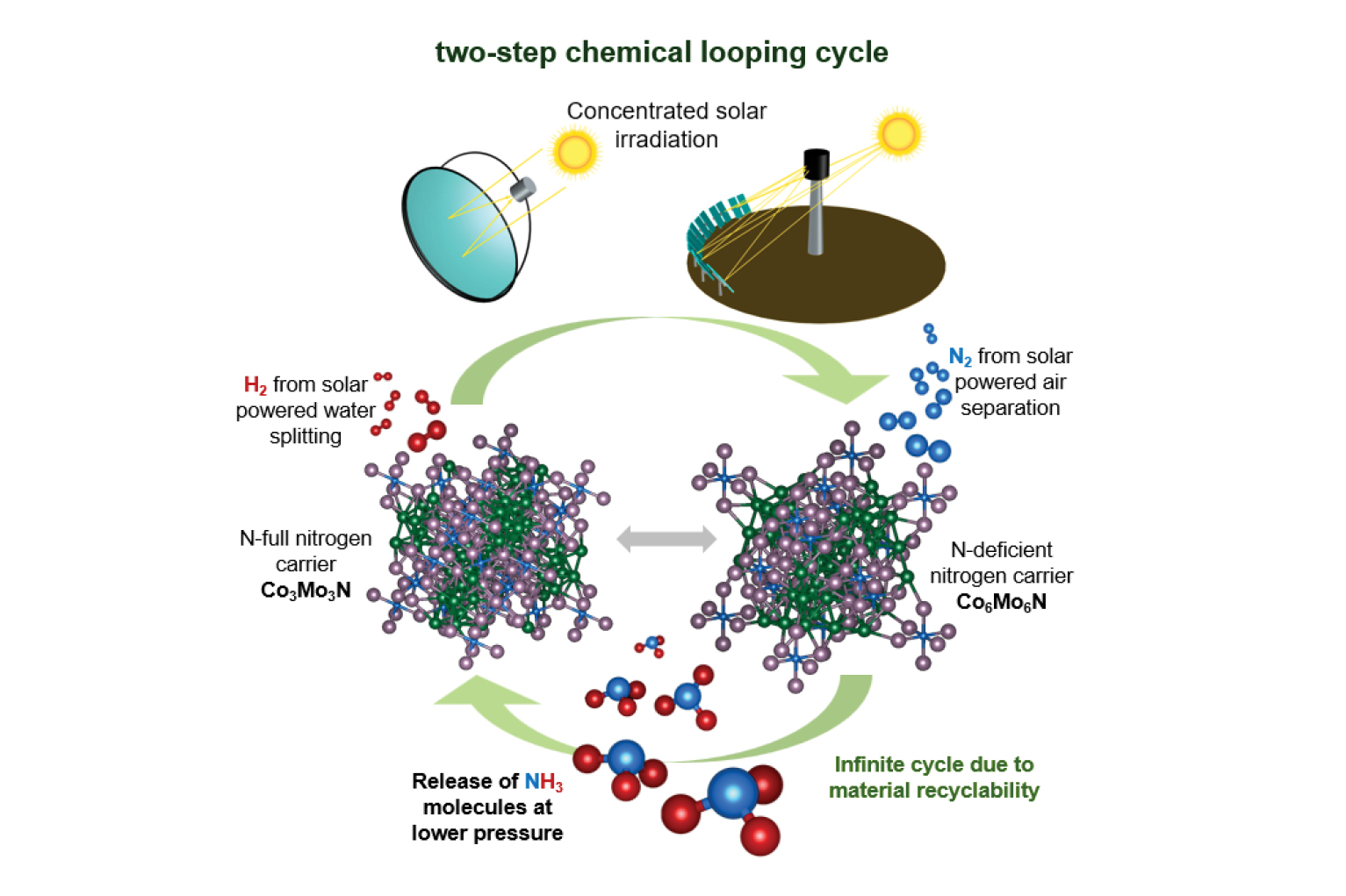
Researchers Investigate Process to Allow Carbon-Neutral Ammonia Production
February 14, 2024
By Chloe Arrington
Ammonia (NH3) is an energy-dense chemical that is a vital component of the agricultural industry and has the potential to be used as a carbon-free alternative fuel.
Researchers at the Georgia Institute of Technology, including Peter Loutzenhiser, associate professor in the George W. Woodruff School of Mechanical Engineering, and Ph.D. student Shaspreet Kaur and Ph.D. candidate Nhu "Ty" Nguyen, have successfully investigated, characterized, and demonstrated a carbon-neutral pathway for green NH3 production that utilizes sunlight, water, and air. The process is enabled by a chemical looping cycle using Co3Mo3N as a nitrogen carrier, with the potential for NH3 synthesis occurring at a lower pressure than current industrial practice.
NH3 is a pivotal chemical commodity for which production has been identified as one of the four most energy-intensive processes, producing substantial greenhouse gas emissions. However, NH3 production has the potential to highly benefit from integration with concentrated solar technologies for decarbonization.
“When utilized at an industrial scale, this process will allow us to reduce the carbon footprint associated with current production practices,” said lead author Nguyen. This pathway also removes methane from the list of needed ingredients, further enabling the industry to move away from fossil fuels.
The research, conducted in collaboration with Sandia National Laboratories and Arizona State University, was recently published in Advanced Energy Materials.
Current direct CO2 emissions from NH3 production are twice that of crude steel and four times that of cement production. “The demand for NH3 is expected to continue to rise in the foreseeable future,” says Nguyen. "This is largely due to NH3 being a vital component for agricultural fertilizer, as well as an energy-dense, carbon-free chemical and a potential fuel.
NH3 is currently produced using the Haber-Bosch process (a synthesis method created at the turn of the twentieth century that uses metal catalysts, air, and methane at elevated pressures to make NH3) which is extremely energy-intensive and accounts for approximately 2% of global energy consumption and 1.3% of global CO2 emissions.
By adding solar thermochemical air separation to create renewable nitrogen, this new two-step chemical looping cycle will produce and store nitrogen from the air for the subsequent production of NH3 via a novel chemical looping pathway with the inputting of sunlight, air, and hydrogen.
“An important overarching concept is utilizing solar thermochemistry, which means capturing the solar irradiation and converting the resulting thermal energy into useful chemical bonds (making renewable fuels or chemical commodities),” explained Nquyen.
To achieve the high temperature (higher power density) needed, sunlight is concentrated using a parabolic mirror(s) or a heliostat field. The mirrors redirect and increase sunlight intensity thousands of times. “This is what we mean by ‘concentrated solar’,” says Nguyen. "The solar thermochemical cycle aims to integrate the operating condition (temperature and pressure) that can be achieved by concentrated solar technologies to make green NH3."
Further work is currently underway by other collaborators on the project where they are studying the process at elevated pressures. They are investigating ways to improve yield as well as simplifying the cycle steps to reduce overall energy consumption.
About the Research
The research effort at Georgia Tech was led by Associate Professor Peter Loutzenhiser, Nhu “Ty” Nguyen, and Shaspreet Kaur, in collaboration with Andrea Ambrosini and Evan Bush from Sandia National Laboratories, as well as Jim Miller from Arizona State University. Some nitride material crucial for this research was kindly provided by Michael Gao at Arizona State University. This research is supported by the U.S. Department of Energy’s Office of Energy Efficiency and Renewable Energy (EERE) under the Solar Energy Technologies Office (SETO) Award Number DE-EE0034250.

Associate Professor Peter Loutzenhiser

Ph.D. student Shaspreet Kaur

Ph.D. candidate Nhu "Ty" Nguyen
